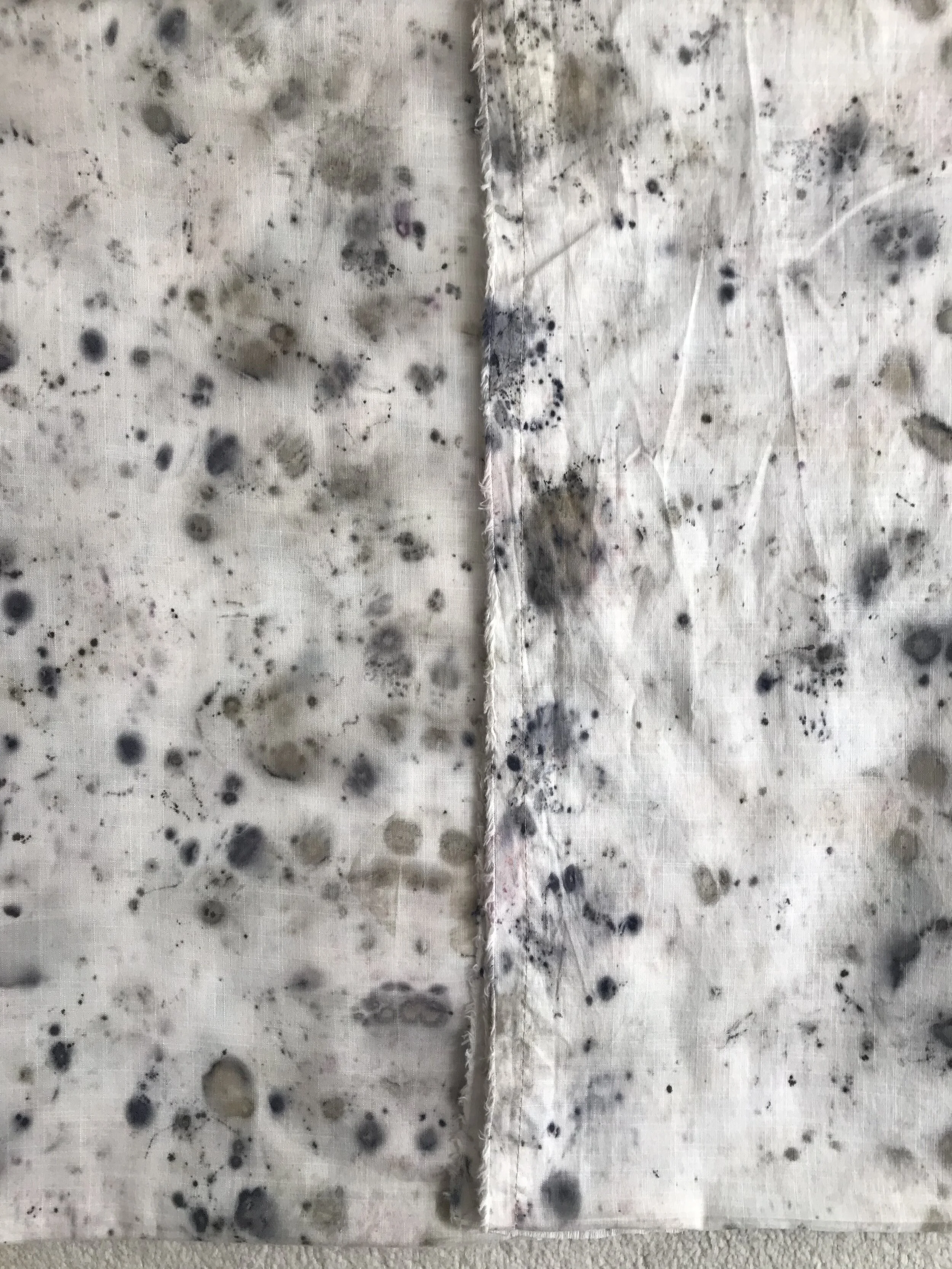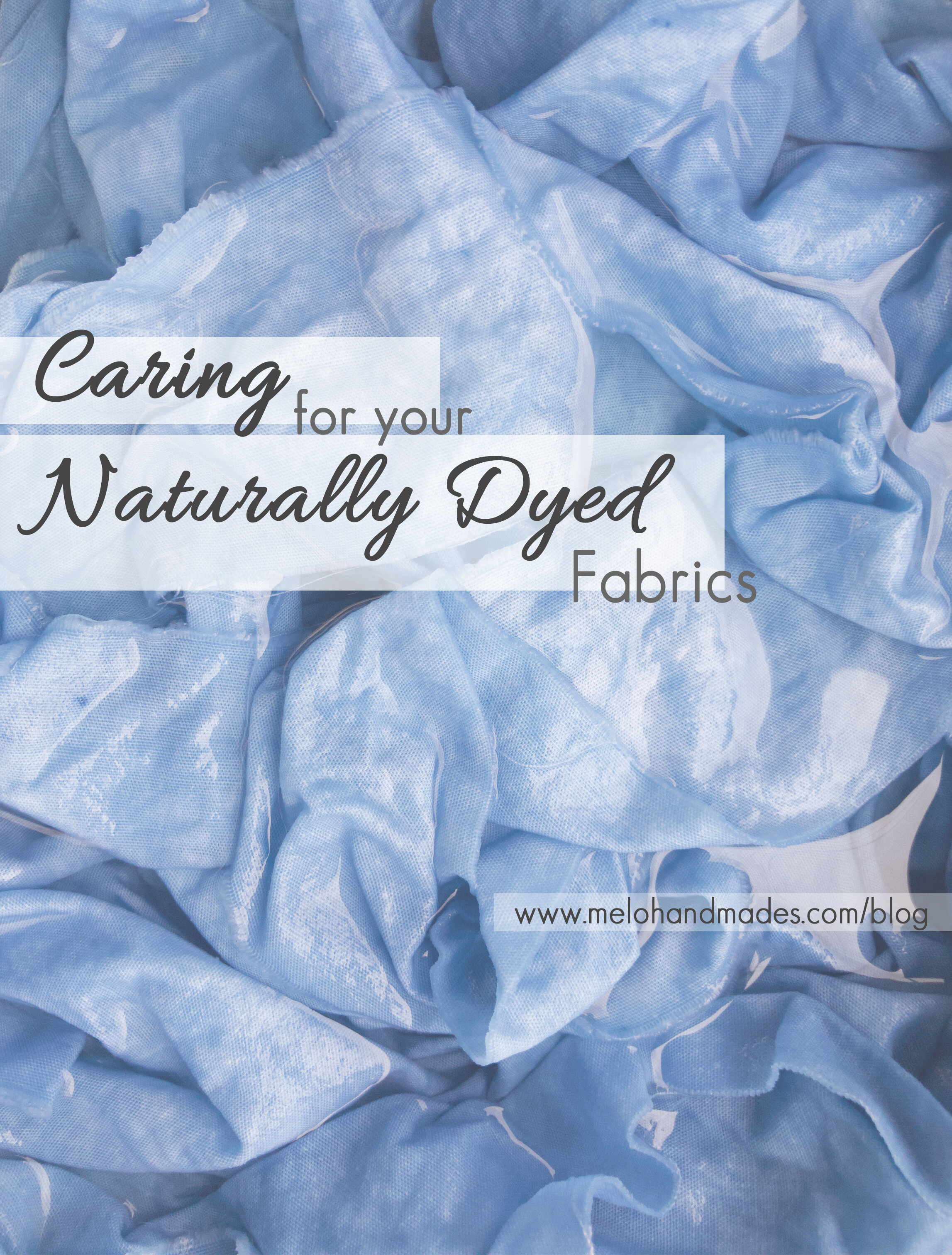Caring for your Naturally Dyed Fabrics
How do I wash my naturally dyed product?
This must be the most frequently asked question I get when interacting with customers.
Natural dyes, unlike synthetic colours, are living colours and will inevitably mellow and change with age and wear. Depending on the dye material, the resulting colours will mellow at varying rates and can be sensitive to chemical exposures or conditions. So it’s no wonder many people feel intimidated by caring for naturally dyed fabrics! Setting aside poorly dyed pieces, either from poor dyeing practices or items dyed with fugitive dyes that provide instant gratification but are not meant to last, caring for well made, naturally dyed items isn’t actually difficult. Just getting into a few simple, good habits (which we should be doing with all textiles anyway) which I’ve detailed below should provide your naturally dyed items with the TLC they require.
Wearing & Using
When wearing or using your naturally dyed items, avoid contact with chemicals such as perfumes, make-up and other beauty products as components in them may stain, react with the natural dyes or expose them to conditions that can change their colour.
Be careful when using them around acids or alkalis as pH changes can alter the colours.
Reactive metals such as iron and copper can also react with natural pigments, especially when wet or in solution, to change the colours, so handle with care and wear an apron or protective clothing where possible.
Cleaning
First off, excessive washing wears down fibres and exposes the dyes to conditions that promote fading, so don’t wash it unless you feel you really have to.
For items such as scarves and other accessories, giving them a light steam treatment on a low iron or hanging it in the bathroom while you shower can help freshen them till the next wear. Perspiration marks can often be removed with a light rinse in water. If and when you do need to wash your naturally dyed fabrics, you can wash them in the washing machine on a delicate cycle (recommended for cotton, linen and other cellulose fibres) or by hand with cold water (recommended for silk, wool and animal fibres) and a mild detergent if necessary. Of course, don’t use bleach! It’s also not necessary to dry clean your items.
After washing, hang to dry in shade and iron on a low setting to encourage the natural colours to shine.
A botanically infused cotton scarf, before (right) and after (left) ironing.
Storage
Light, especially sunlight, is one of the worst enemies of dyes (both natural and synthetic actually!) and limiting your naturally dyed pieces’ exposure to light will help prevent discolouration. For pieces meant to be displayed such as wall-hangings and framed artworks, this means choosing the right spot which keeps them out of direct sunlight while still enjoying their beauty. Functional pieces such as garments and bags, are best put away in cool, dry places where they’ll see as little light as possible after use. For that extra protection, store them in opaque bags or boxes which will also help keep away dust and dirt.
Wherever possible, hang your naturally dyed textiles and avoid storing them folded as permanent creases can develop over time which weakens fibres and can cause colours to migrate. You can also roll your textile over a non-reactive pipe or dowel.
I hope these little tips will help you enjoy your naturally dyed items at their fullest for many years to come and help ease your fears about caring for naturally dyed pieces you own or are thinking of bringing home with you. If you’ve got any questions at all, feel free to drop me a message or email and I’ll be happy to chat :)
Pin & Share
and help spread the word if you’ve enjoyed this post!








